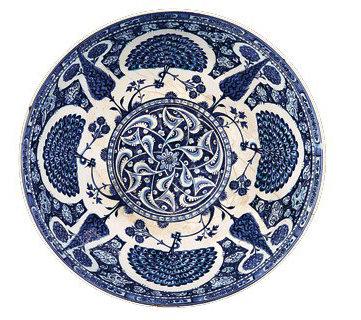100-Year-Old Iznik Tiles at the Bottom of the Ocean
The Iznik tiles laid in the Turkish bath of the famous Titanic ship, which crashed into an iceberg on April 5, 1912, are still intact as a result of the researches carried out in 2005.
You can watch the surprise of the discovery channel team, who took a picture with the robot diver, below
During the Ottoman period, Iznik ceramics were only produced for the palace and sale to the public was prohibited.

During the Ottoman period, Iznik ceramics were produced only for the palace and only by the order of the palace.
It was forbidden for the Iznik ceramics patterns were widely used in the clothes and jewelry of the Ottoman sultans.
An example of tulip and cintemani pattern in the picture on the right is a caftan.
1 Piece Iznik ceramics Plate 1 million 426 thousand 500 pounds

In 2014, Iznik ceramics plates from the Ottoman Period were sold at Christie's auction house in London for 1 million 426 thousand 500 pounds. The plate, which belongs to the 1510s, includes a cypress tree pattern and tones of blue.
Iznik ceramics do not get old, they do not go out of fashion. You can leave Iznik ceramics as a legacy to your grandchildren.
Iznik Ceramics Absorb Stress 
Iznik ceramics, which contain quartz-based paste, have a positive effect on people and the environment. Iznik ceramics spread positive energy to your office or home.
Arouses the urge to touch
Another feature of the quartz-based paste of Iznik ceramic is that it makes people want to touch it all the time.
It is no coincidence that your guests touch the products you buy from us.
Why Iznik Tile in Decoration
Iznik tiles with a high quartz content reflect the light and refresh the environment, providing a warm environment in winter and cool in summer. Since it does not hold moisture, there is no mold problem.
It is also useful to know that the tile entered the Turkish art from West Turkestan and went as far as Portugal with Ottoman, and what we now call faience is the imitated kasi (tile) in Faenza, Italy.
Let's Get to Know the Iznik Pottery Closer